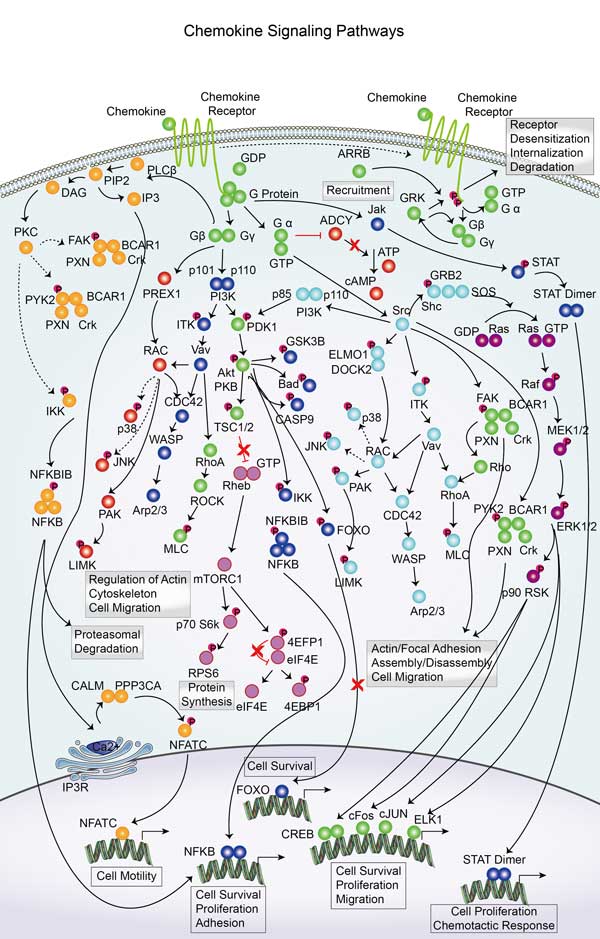ADCY4
-
Official Full Name
adenylate cyclase 4 -
Synonyms
ADCY4;adenylate cyclase 4;adenylate cyclase type 4;AC4;ADCY4_HUMAN;Adenylate cyclase type IV;Adenylyl cyclase 4;Adenylyl cyclase;ATP pyrophosphate lyase 4;ATP pyrophosphate lyase;ATP pyrophosphate-lyase 4;mKIAA4004
| Cat.# | Product name | Source (Host) | Species | Tag | Protein Length | Price |
|---|---|---|---|---|---|---|
| Adcy4-3175R | Recombinant Rat Adcy4, GST-tagged | E.Coli/Yeast | Rat | GST | 1064 |
|
| Adcy4-6926M | Recombinant Mouse Adcy4 protein, His & T7-tagged | E.coli | Mouse | His&T7 | Ile352~Val541 |
|
Involved Pathway
ADCY4 involved in several pathways and played different roles in them. We selected most pathways ADCY4 participated on our site, such as Purine metabolism,Rap signaling pathway,Calcium signaling pathway, which may be useful for your reference. Also, other proteins which involved in the same pathway with ADCY4 were listed below. Creative BioMart supplied nearly all the proteins listed, you can search them on our site.
| Pathway Name | Pathway Related Protein |
|---|---|
| Circadian entrainment | ITPR3,KCNJ3,MAPK3,GNG3,CAMK2B,CALM3,PRKACG,PRKCG,ADCYAP1R1,GUCY1B3 |
| Vascular smooth muscle contraction | PLA2G2A,ADCY1B,PLCB4,PTGIR,MYLK4,MAP2K1,GNA12,PRKACBB,KCNMB3,MYL9A |
| Taste transduction | TAS2R38,TAS2R137,TAS2R143,TAS2R140,PDE1A,TAS2R7,GNG3,TAS2R107,TAS2R121,KCNB1 |
| Chemokine signaling pathway | CCL13,CCL26,PAK1,Ccl12,GNG8,CCL8,CXCL11,FOXO3,CCL19,SHC2 |
| Pancreatic secretion | PRSS3,CTRB1,ITPR1,SCTR,PLCB2,CELA3A,CELA2A,PRSS2,PNLIP,RAB27B |
| Aldosterone synthesis and secretion | HSD3B5,PLCB1,CALM2,ADCY1,CYP11A1,PLCB2,CAMK2B,HSD3B6,PRKCA,KCNK3 |
| Progesterone-mediated oocyte maturation | ARAF,AKT2L,CDC16,RAF1B,GNAIA,MAPK10,RPS6KA1,ADCY1B,HSP90AA1.1,IGF1RA |
| GABAergic synapse | GNAI2,NSF,PRKCA,SLC12A5,GABRP,SLC38A2,GNG3,GABRB1,GNAI3,GNG8 |
| Salivary secretion | LYZ1,AMY1B,CAMP,AMY1A,CALM3,CALM2,PRKACB,ATP1A2,SLC9A1,KCNN4 |
Protein Function
ADCY4 has several biochemical functions, for example, ATP binding,G-protein beta/gamma-subunit complex binding,adenylate cyclase activity. Some of the functions are cooperated with other proteins, some of the functions could acted by ADCY4 itself. We selected most functions ADCY4 had, and list some proteins which have the same functions with ADCY4. You can find most of the proteins on our site.
| Function | Related Protein |
|---|---|
| adenylate cyclase activity | ADCY7,ADCY6,ADCY3,ADCY1,ADCY9,ADCY1A,ADCY2B,ADCY1B,ADCY8,GNAS |
| metal ion binding | OAS1,AMPD2,SCAPER,CYP2P8,CLIP1,AKAP13,ZNF777,ZNF281B,DMRT3,HELZ |
| nucleotide binding | RBM15,DIRAS1A,STK24A,RBMS2B,GNA15.4,ERBB4A,CPEB1A,RBM24A,THOC4,GMPPAA |
| ATP binding | IGF1RB,DDX3,ATAD5B,NAIP1,MLH3,MAP3K4,MYH13,CAMK2B,YTHDC2,UBA3 |
| G-protein beta/gamma-subunit complex binding | CETN1,ADORA1,GNAV1,GNAT3,GNAO1B,GNAZ,GNA15,GNAT2,GNA11,GNAT1 |
Interacting Protein
ADCY4 has direct interactions with proteins and molecules. Those interactions were detected by several methods such as yeast two hybrid, co-IP, pull-down and so on. We selected proteins and molecules interacted with ADCY4 here. Most of them are supplied by our site. Hope this information will be useful for your research of ADCY4.
ADCY4 Related Signal Pathway
Resources
Related Services
Related Products
References




